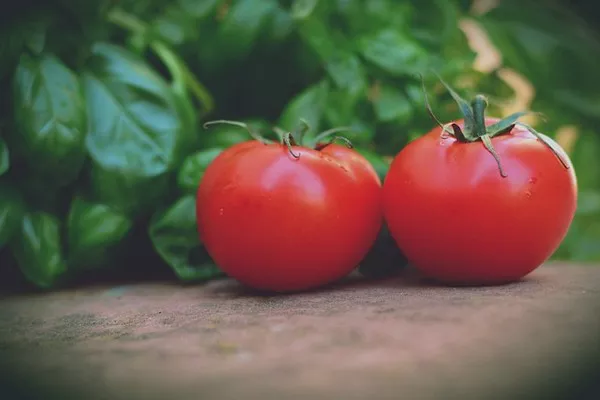Tomatoes are one of the most popular and versatile vegetables in home gardens worldwide. Their juicy, flavorful fruits can be enjoyed fresh, in salads, sauces, and various culinary creations. To successfully cultivate these vibrant plants, it’s crucial to understand the nuances of planting tomato plants. This article aims to provide a comprehensive guide on how to plant tomato plants, covering key aspects such as site selection, soil preparation, planting techniques, and ongoing care.
1. Site Selection
Selecting the right site for your tomato plants is fundamental to their growth and productivity. Tomatoes thrive in full sunlight, requiring at least 6-8 hours of direct sunlight daily. Choose a location that offers ample sunlight exposure while also providing protection from strong winds. Ensure that the area is well-drained to prevent waterlogging, as excessive moisture can lead to root rot and other diseases.
2. Soil Preparation
Preparing the soil properly lays the foundation for healthy tomato plants. Start by testing the soil’s pH level; tomatoes generally prefer slightly acidic soil with a pH range of 6.2 to 6.8. If the pH is too low or high, amend the soil accordingly using lime to raise pH or sulfur to lower pH.
Enrich the soil with organic matter such as compost, well-rotted manure, or peat moss to improve drainage, structure, and nutrient content. Amending the soil with organic material also encourages beneficial microbial activity, which aids in nutrient uptake by the plants.
3. Choosing Tomato Varieties
Selecting the right tomato variety is crucial to ensure a successful harvest. There are countless tomato varieties available, each with distinct characteristics, growth habits, and fruit sizes. Consider factors such as the local climate, intended use (fresh consumption, canning, or sauces), and available space when choosing a tomato variety.
Determinate varieties tend to have a more compact growth habit and set fruit all at once, making them suitable for smaller spaces or for gardeners looking to harvest a large quantity for canning. Indeterminate varieties continue to grow and produce fruit throughout the growing season, making them ideal for those who desire a continuous harvest.
4. Planting Techniques
Proper planting techniques contribute significantly to the early development of tomato plants. Follow these steps for successful transplantation:
Timing: Wait until all danger of frost has passed before transplanting tomato seedlings outdoors. This usually corresponds with the last expected frost date in your region.
Spacing: Plant tomato seedlings at least 24 to 36 inches apart, allowing enough room for the plants to grow and spread. Proper spacing ensures adequate air circulation, which reduces the risk of fungal diseases.
Digging the Hole: Dig a hole slightly deeper than the root ball of the tomato seedling. This helps to promote strong root growth.
Root Pruning: Gently remove the lower leaves from the seedling, leaving only the top few sets of leaves. This encourages the development of a robust root system along the stem when buried in the soil.
Planting Depth: Place the tomato seedling in the hole so that only the top leaves are above the soil surface. Bury the stem up to the top leaves, as buried stems can develop additional roots, enhancing the plant’s stability and nutrient uptake.
Mulching: Apply a layer of organic mulch around the base of the plant to conserve soil moisture, regulate soil temperature, and suppress weed growth.
5. Watering and Fertilization
Consistent and appropriate watering is essential for tomato plants. Keep the soil consistently moist, but not waterlogged, especially during the flowering and fruiting stages. Drip irrigation or soaker hoses are recommended to avoid wetting the foliage, as wet leaves can promote the development of diseases.
Fertilization is another critical aspect of tomato plant care. Before planting, work a balanced fertilizer into the soil based on soil test recommendations. Once the plants are established, side-dress them with additional fertilizer a few weeks after transplanting and again when the first fruit sets. Avoid excessive nitrogen fertilization, as it can lead to lush foliage growth at the expense of fruit development.
6. Support and Pruning
Most tomato plants benefit from some form of support to keep their growing vines off the ground, which improves air circulation and minimizes the risk of soil-borne diseases. Options for support include stakes, cages, trellises, and tomato-specific support systems.
Pruning is also essential to ensure proper air circulation and light penetration into the foliage. Remove the suckers—small shoots that develop in the crotch between the main stem and side branches—to focus the plant’s energy on fruit production. However, this practice varies depending on the type of tomato variety; determinate varieties may require less pruning than indeterminate ones.
Conclusion
Planting tomato plants requires careful consideration of various factors to ensure their optimal growth and productivity. By selecting an appropriate site, preparing the soil, choosing the right tomato variety, practicing proper planting techniques, and providing adequate care, gardeners can look forward to a bountiful harvest of delicious tomatoes. Whether you’re a seasoned gardener or a beginner, following these comprehensive guidelines will help you cultivate thriving tomato plants that yield a flavorful bounty throughout the growing season.


